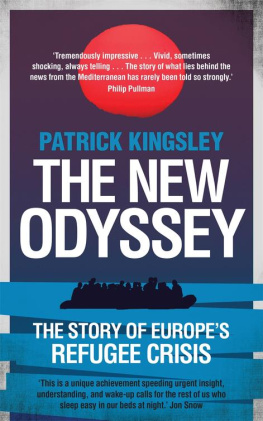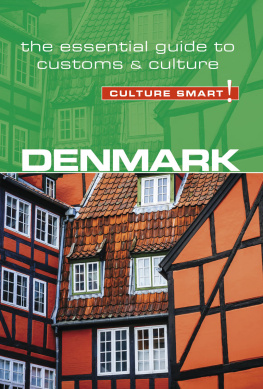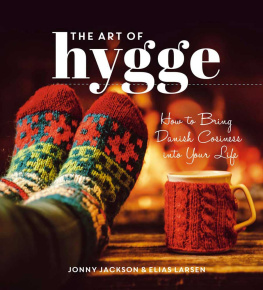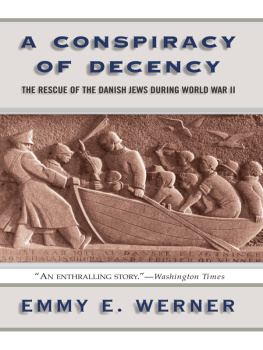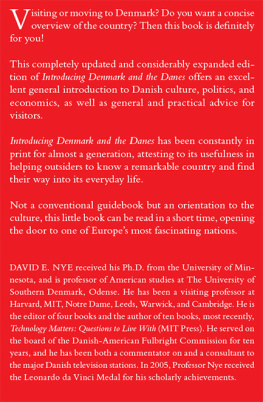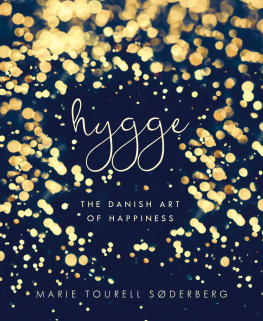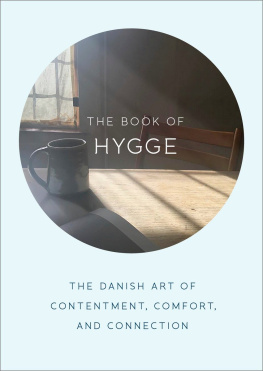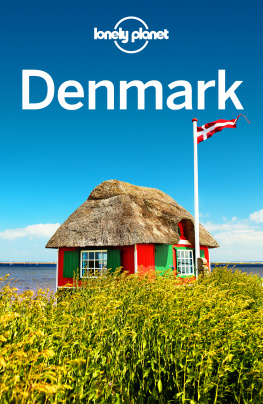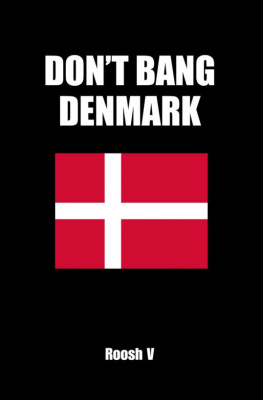Thank you for downloading this Atria Books eBook.
Join our mailing list and get updates on new releases, deals, bonus content and other great books from Atria Books and Simon & Schuster.
1. Work well, play well:
a Scandinavian education
2. Ramsons and seaweed:
the Nordic food revolution
3. More than just chairs:
the Danish design DNA
4. Poor Carina:
the problem at the heart of the welfare state
5. Being Danish:
the immigrants dilemma
8. Jutland:
happiness country?
DENMARK
INTRODUCTION
There was a point early in 2012 when it felt as if you couldnt open a British newspaper or magazine without reading something about Denmark. We read that the Danes are the happiest people in the world the UN said so. There were paeans to BBC4s cult Danish dramas not just The Killing , but Borgen and The Bridge , which was watched by over a million people in Britain. There were interviews with Helle Thorning-Schmidt, Denmarks first female prime minister, and reams of writing about Noma, named the worlds best restaurant for the third year in a row. For the first half of 2012, the Danes were the presidents of the EU, which gave them even greater exposure. We heard eulogies to their utopian welfare state, their unrivalled cycling culture and their commitment to environmentalism. Some of us remembered Denmark for the Muhammed cartoons crisis of 2006. The rest of us donned as many layers as we could of Danish knitwear. In short, Scandi fever or perhaps more accurately, Danish delirium gripped the nation. Or parts of it, anyway.
In one sense, How to be Danish is yet another drop in the deluge. In another, its an attempt to connect the dots between some of the different puddles. Part reportage, part travelogue, it cant be the definitive book about Danish life. But using shows like The Killing as a starting point, it will hopefully provide a wider context to the bits of Denmark that over the past few years have intrigued some of us in Britain an accessible panorama of contemporary Danish life, written from an English perspective. In spring 2012, I spent a month in Denmark, travelling from the cycling lanes of Copenhagen to the windmills of west Jutland. I visited the set of The Killing , the test labs of the New Nordic kitchen and the place thats said to be the happiest town in the world. I poked around mosques and schools, churches and farms and a remote little island where some grizzled farmers have created the worlds most unlikely eco-haven. I interviewed over 70 Danes most of them fascinating, a few of them dull; many of them in the public eye, but some not. I bounced from actors to designers, chefs to architects, journalists, politicians, students, imams, refugees feeling my way as I went. I met the people who created Sarah Lund, the man who founded Noma, and the woman who knitted that jumper. This book is a stab at creating a narrative from some of those encounters. It is not in case anyone has read too much into the title a serious tutorial on how, actually, to be Danish. Most countries are impenetrable to outsiders, but some like, perhaps, America have a national identity that is at least semi-permeable to newcomers. Denmark is not yet one of them.
Four per cent of Danes are called Hansen. According to some estimates, just 3% are Muslim: it is still a fairly homogenous country. For reasons that will hopefully become clear in later chapters, Danishness is still something that can only really be achieved through a Danish upbringing and definitely not from a short book like this. Its a small place, Denmark. Many Danish micro-worlds bleed into others, and as a result it is hard to construct a thread about the country within clearly compartmentalised chapters. Ive written eight. While each one is rooted in a single theme respectively: education, food, design, politics, identity, Copenhagen, television, Jutland they all often meander into other realms. The politics chapter begins with a discussion about the Danish language, but stick with it. The section on Copenhagen is also the story of Danish bicycles and architecture. Knitting creeps into the strand about television. The last chapter kicks off in Jutland, with some teenagers pissing against a wall, but ends up talking about windmills. All of them, though, can be read on their own. God fornjelse !
1. WORK WELL, PLAY WELL:
a Scandinavian education
Everyone has to take part Else Mathiassen
It could be any old school disco. In the sports hall, the cool kids bounce around to loud music. In the playground, the shy ones look at their shoes, shivering. At some point, a young woman wrapped in an inflatable orange tube bursts from the sports hall and pinballs across the playground, aiming a large yellow water gun at all those who cross her path. This is the end-of-year party at Ingrid Jespersen High School theme: beach; weather: Danish but not all of those present share their classmates exuberance. Its a cold night, and perhaps they regret obeying the Hawaiian dress code with quite such diligence.
Some feet away in the sports hall, a few hundred other sixth-formers are having a better time of it. Ringed with garlands of fake flowers, they bump to Rihanna, and Danish artists like Kidd and Malk de Koijn. Every so often theyll thrust their way towards the makeshift bar where their teachers known, like all Danish teachers, by their first names happily hand out pints of beer. In the corners, couples make out. People are merry, but not blotto. In a last hurrah before next weeks exams, most of them are having fun. Still, something makes me anxious. First up, I feel like Ive been here before. Second: I keep thinking that something unspeakably evil is about to happen.
In a way, Im partly right. I have been here before at least, Ive seen this place on screen. Its the playground where they filmed the school scenes from the first season of The Killing . Much of the plot of the first few episodes revolves around what happens one night at a school disco a disco, slightly disconcertingly, that is rather like this one. At first, you think a girls been kidnapped at the party. Then you think shes been murdered in the basement. Finally, you suspect someone else has been raped or, at the very least, filmed having group sex. I look around. Wheres the camera? Wheres the basement? Whos the killer? But these arent the only questions Im wrestling with. I came here tonight fascinated mostly by the schools connections to Danish television. Ive ended up just as intrigued by what the school says about the Danish education system, and, in fact, Denmark itself.
In a way, Ingrid Jespersen is not very representative of Denmark at all. Its quite elitist, in fact. Its a private school, its in a posh bit of Copenhagen and the offspring of three very different, very high-profile politicians all go here the daughter of the social democratic prime minister; the daughter of the leader of the Danish Lib Dems; and the grandchild of Pia Kjaersgaard, the one-time leader of for want of a better comparison the Danish equivalent of the BNP.
But as Rihanna throbs away in the background, one thing fascinates me. If this is a private school, why does the government subsidise around 80% of the school fees?


